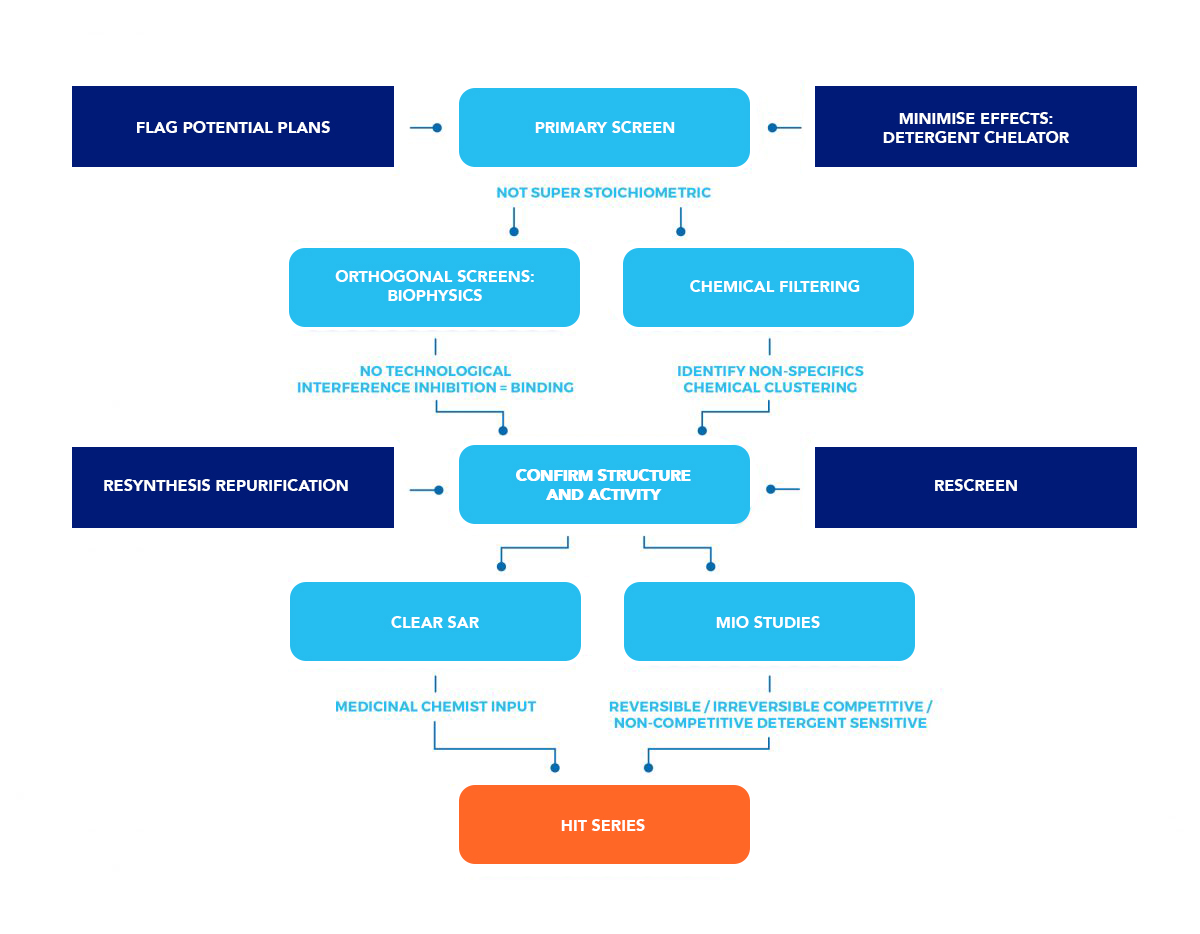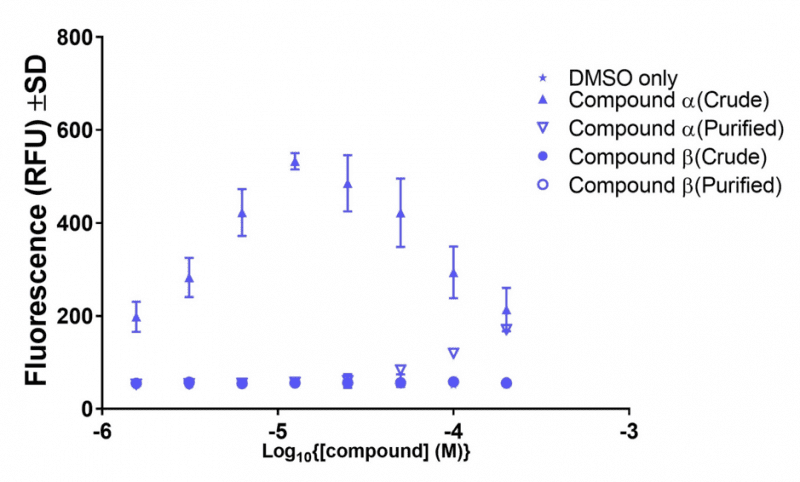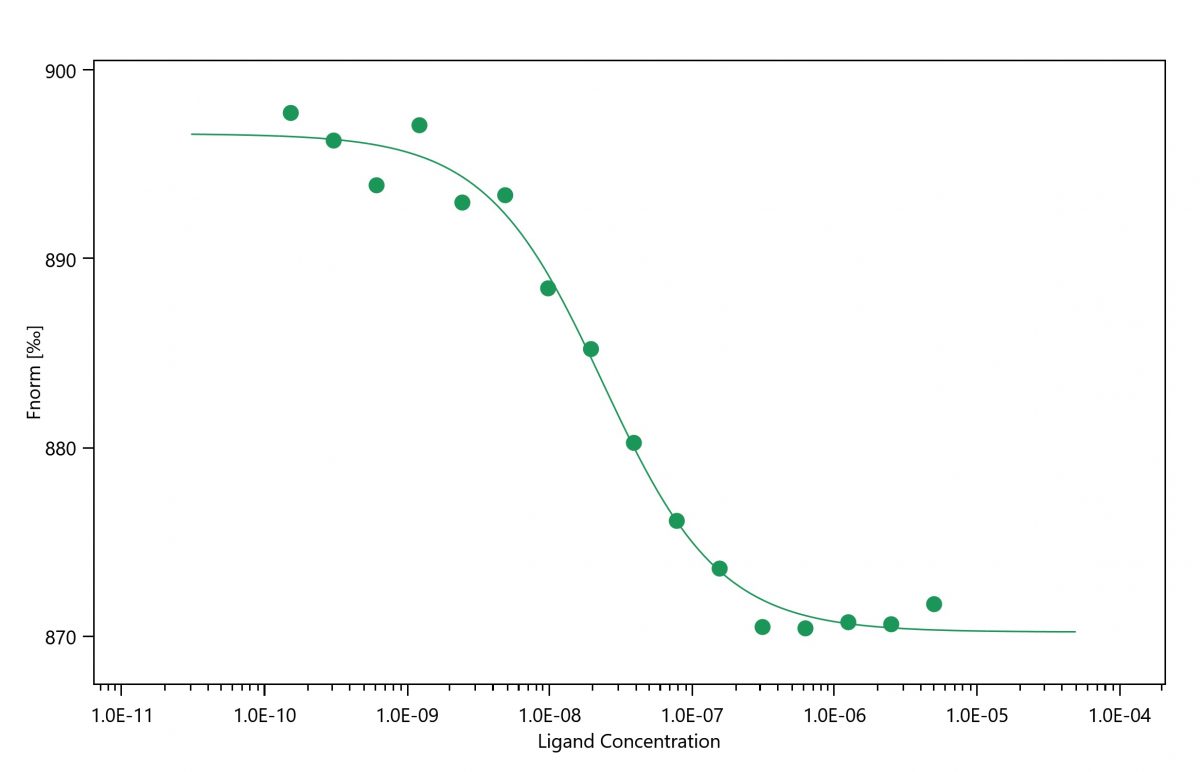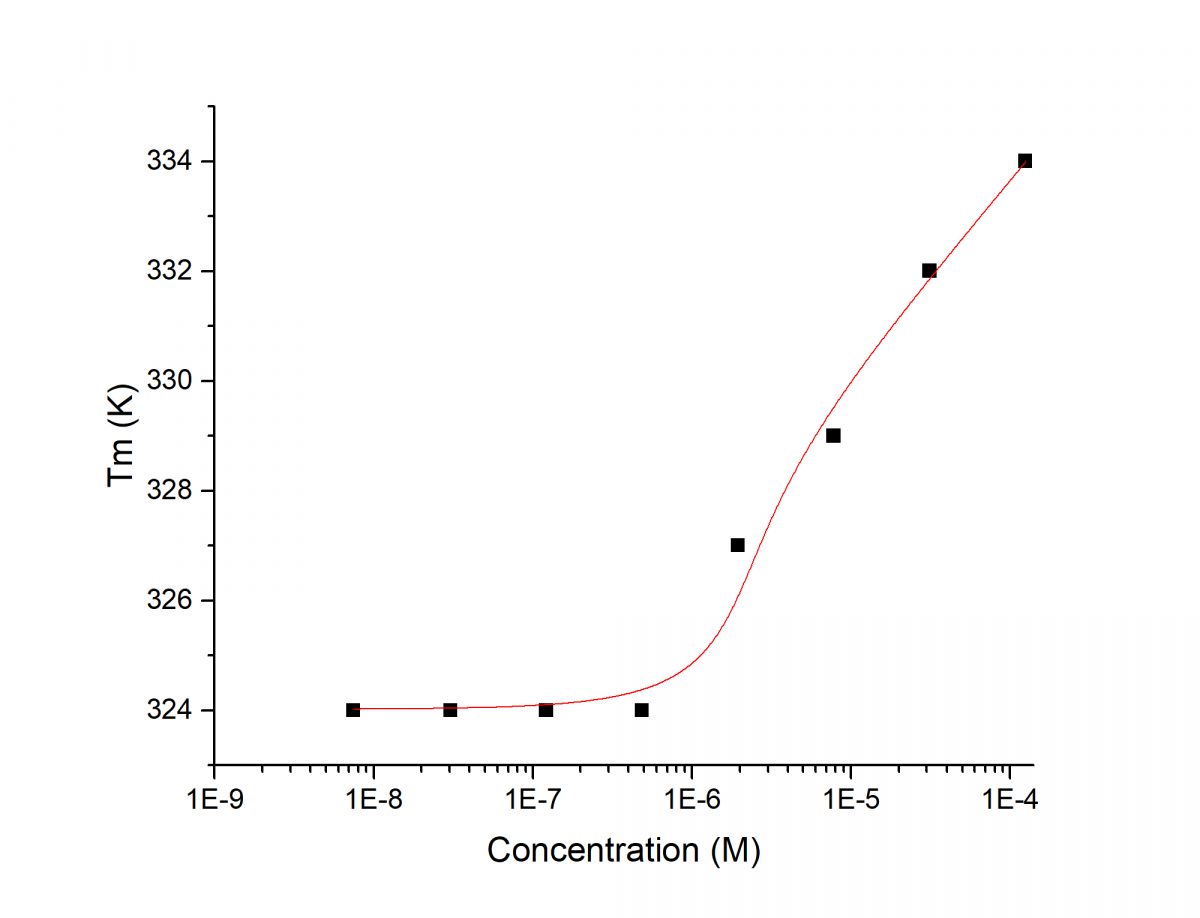Screening Cascade Development
When designing tailored, streamlined and informative screening cascades our scientists have the experience to ensure the continual delivery of high quality, reliable data throughout the lifetime of your project.
To facilitate project success, it is critical that compound potency and efficacy are confirmed, false positives removed and that any potential liabilities are identified as efficiently as possible. Our scientists continually and specifically tailor cascades as your project progresses, to deliver robust data and appropriate interpretation to the team, aiding project decision making and prioritisation of project objectives.
Screening Cascade Development

Figure 1: Typical Hit Identification Biochemical Screening Cascade
False Positives
With all screening cascade programs, there is the possibility that compounds acting via non-specific or undesirable mechanisms could be flagged as hits. Sygnature appreciate the importance of early identification of false positives is critical to project success, ensuring project resource is focused on progressing robust and validated hit compounds
What is PAIN?
Some compounds are seen to be false positives in multiple screening campaigns and often referred to as Pan-Assay INterference compounds (PAINs). Intriguingly, almost 4% of FDA approved drugs are known promiscuous aggregators, indicating that PAIN activity does not preclude a compound as a potential therapeutic. There are multiple methods by which PAINs can interfere with an assay:
- Active impurities e.g. heavy metals, reactive contaminants
- Multiple binding sites on enzyme
- Protein destabilisers
- Form molecular aggregates
- Technological interference (e.g. fluorescence quenching compounds)
- Redox activity (e.g. generation of reactive species)
- Chemically reactive
Identifying False Positives
At Sygnature Discovery, rather than removing known PAINs from screening libraries, which could lead to the exclusion of legitimate hits, we have implemented a target-specific, systematic strategy to avoid, identify and characterize false positives during the hit identification and validation stages of a drug discovery campaign. Identifying PAINs is a challenge; however, they typically share one or more of the following features:
- IC50 > 3µM
- Steep concentration-inhibition curve (super stoichiometric)
- Non-competitive
- Irreversible
- Flat SAR
- Time-dependent
- Sensitive to detergent (aggregators)
- Active in unrelated screens e.g. metal ion chelators
- No comparable activity in orthogonal assay
- A known or predicted PAIN structure
Sygnature Discovery employs two main approaches to identifying false positives as a standard in any screening campaign: firstly, hits are confirmed in an unrelated orthogonal assay and secondly by utilising a battery of counter screens for compounds that interfere with assays, including testing for redox active compounds and molecules that affect the detection technology.

Figure 2: Two compounds (α & β) were equipotent in the primary screen. Compound α shows redox activity in a Resazurin assay that was reduced on further purification indicating it is a false positive, due to an impurity in compound. Compound β showed no redox activity and is likely a real hit.

Figure 3: A mechanism for a false hit is to suppress the signal from detection technology. Above is an example of an assay used to identify compounds that interfere in this manner. Compound A shows an IC50 in the absence of enzyme indicating it is a false positive whereas compound B does not and so likely a true hit.
Orthogonal assays
To confirm a compound is a genuine hit, we employ multiple orthogonal assays to ensure activity is not restricted to a particular detection technology. Our extensive drug discovery experience and expertise in Biophysics, Biochemistry and Cell Biology allow Sygnature Discovery to combine multiple binding, activity and cellular assays to ensure that a compound is on target and not a false positive.



Figure 4: The above graphs demonstrate one facet of Sygnature Discovery’s approach to hit confirmation. If binding can be demonstrated using multiple methods we can be confident a hit is not a false positive due to technological interference.
Selectivity
In many drug discovery campaigns a key concern is selectivity of compound for its target over homologues or analogues, as lack of selectivity may present as a clinical liability. At Sygnature Discovery we believe in identifying selectivity issues early in the drug discovery pipeline and we typically build selectivity assays into all screening cascades. Identifying a lack of selectivity early in the discovery phase allows projects to either remove such hits from compound progression, or incorporate improvement of selectivity in their medicinal chemistry strategy.

Figure 5: The above data shows how target selectivity can differ between two related compounds. Compound 1 is both more potent and more selective and will be the driver for further medicinal chemistry.
